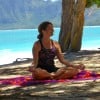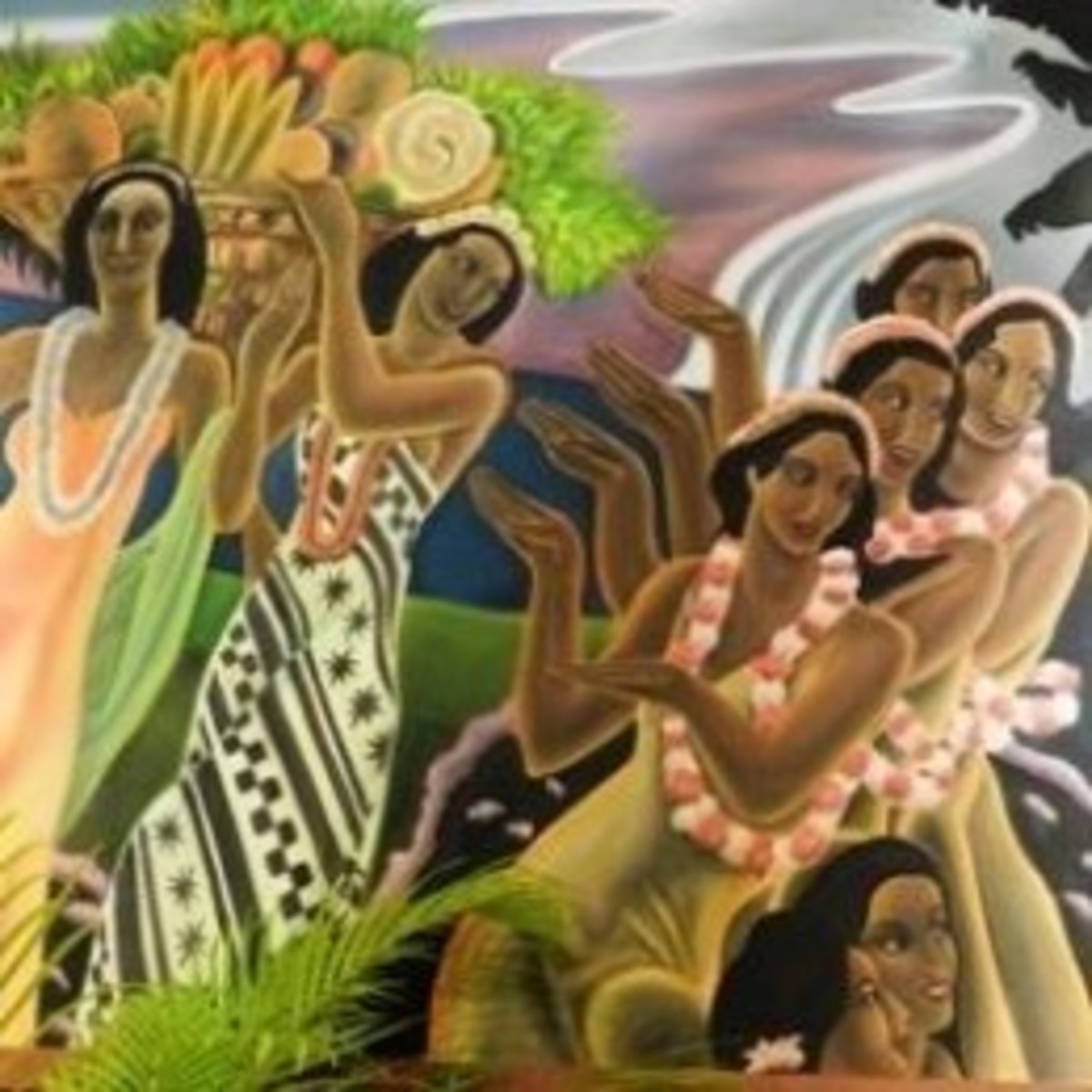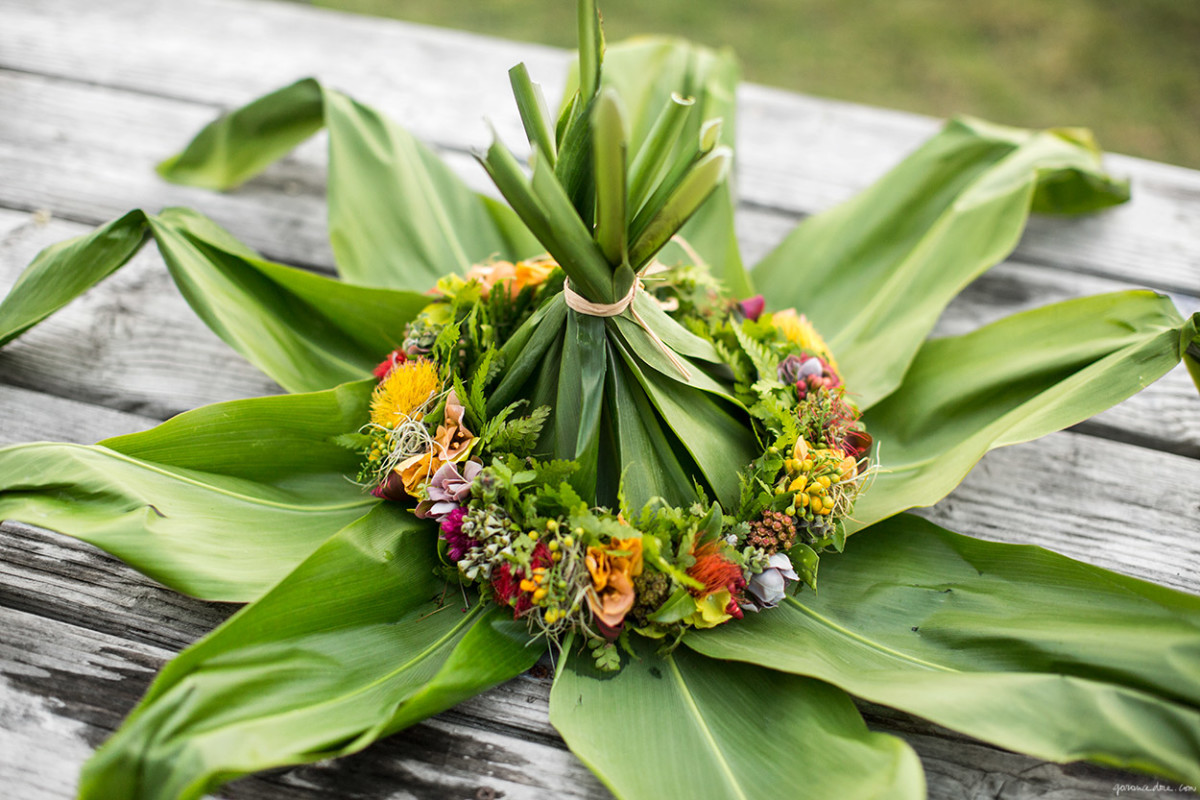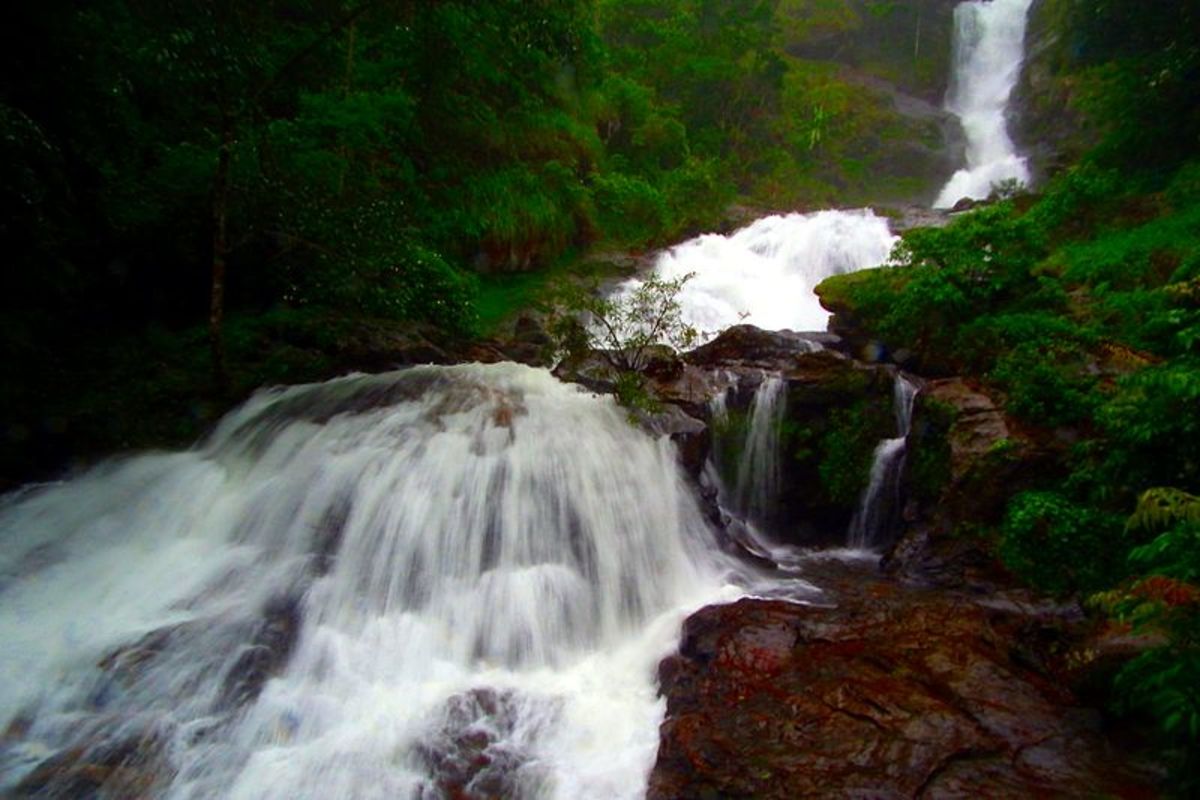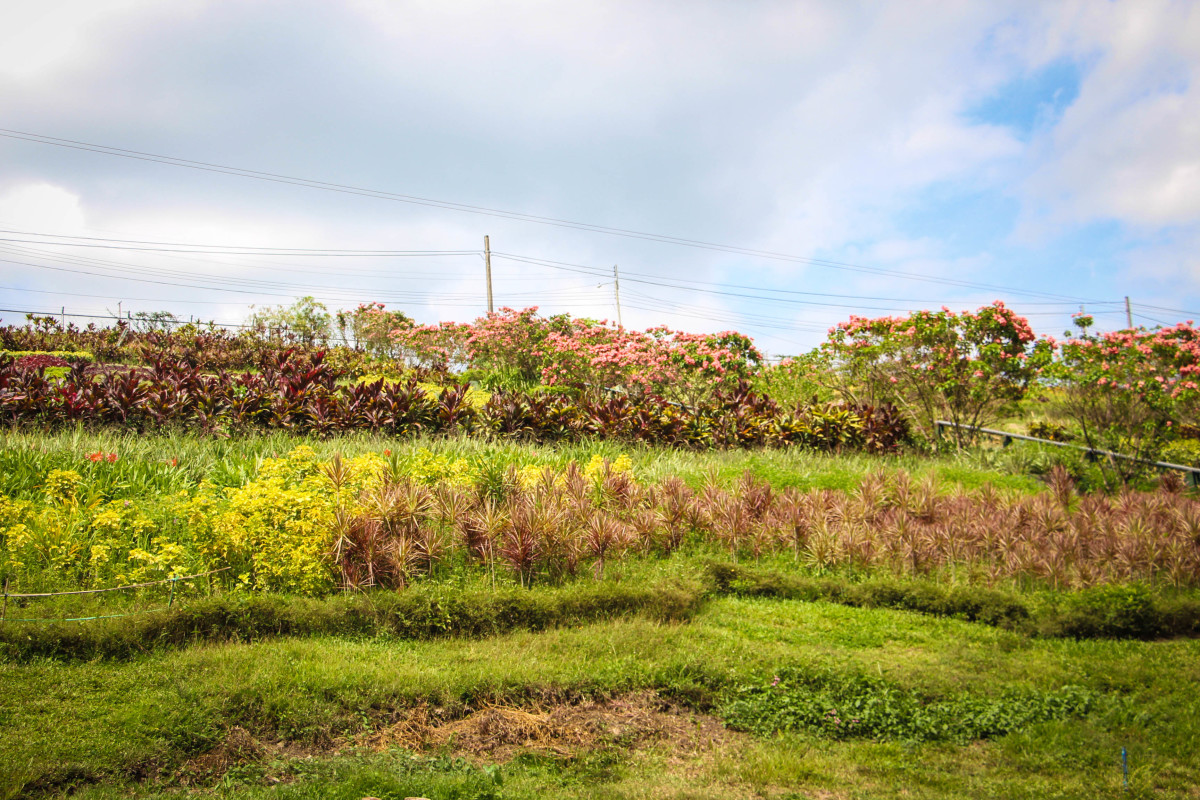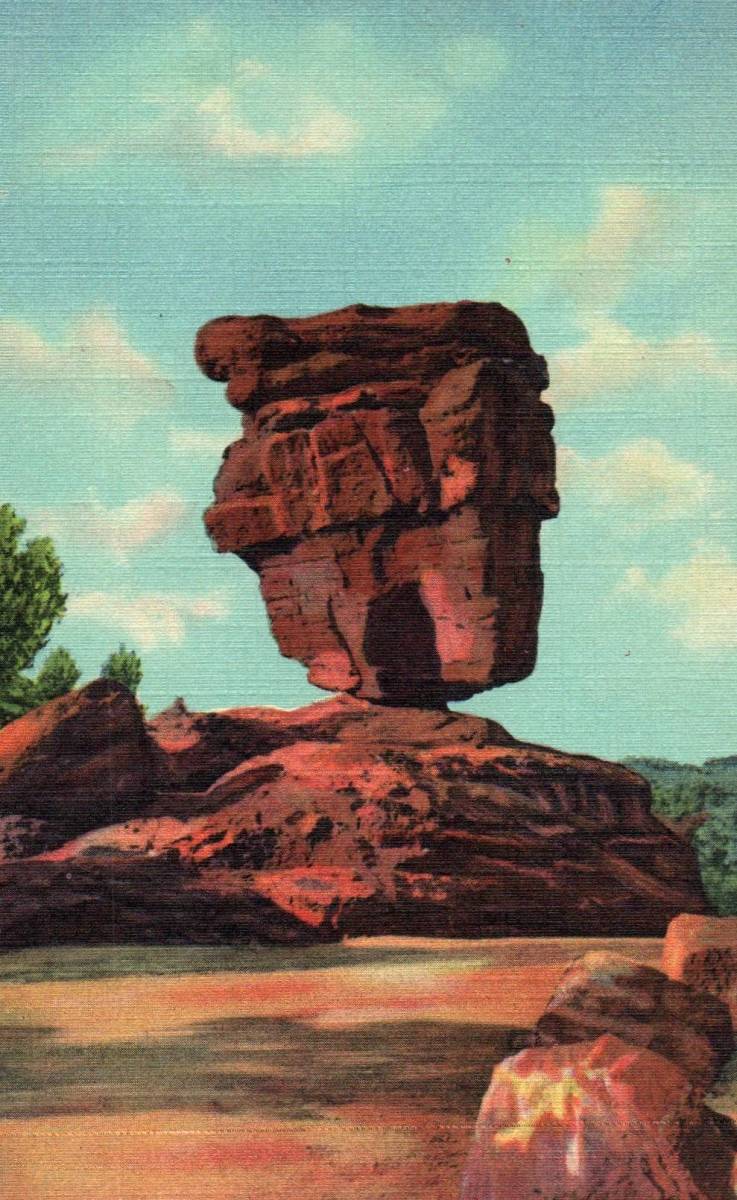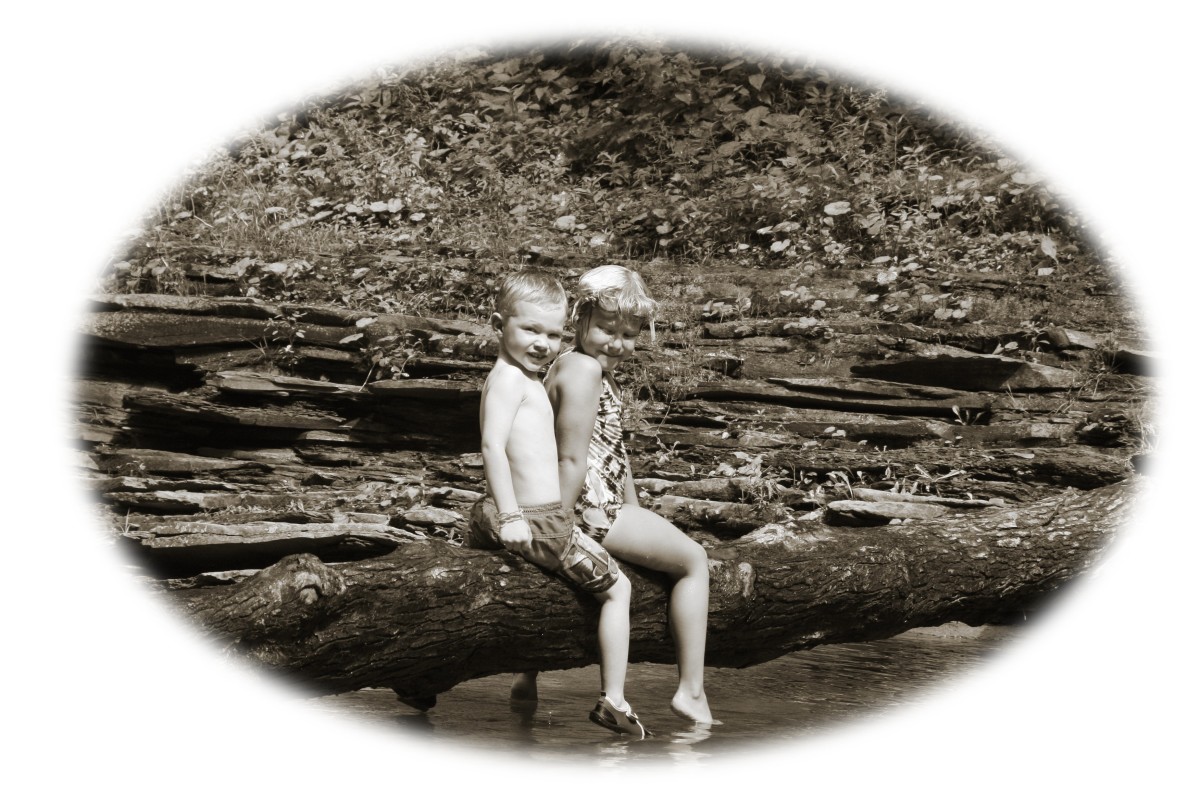Ko ʻOlina Lagoons Pictorial: 10 Reasons Why Tourists and Locals Love This "Joyful Place"
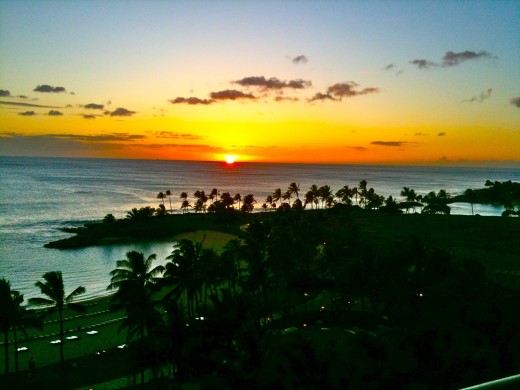
1. Spectacular Sunsets
Ko ʻOlina means "place of joy" in Hawaiian. It is a place where unusually clear skies mean a glorious sunset most evenings. During Hawaii's winter, the sun hits Ko ʻOlina's horizon up close, while Kona winds from Hawaii's volcano blow gases west to create a Mother Nature masterpiece of color explosion. The pleasure and photographic opportunities are paramount because Ko ʻOlina, much more secluded than Waikīkī enables both romantic pics and private picnics.
Located on Oʻahu's southwest shore, Ko ʻOlina's lagoons were once a sacred bathing area for Queen Kaʻahumanu, King Kamehameha the Great's favorite wife. In the 1700 - 1800s, three natural lagoons here were a favorite place for Hawaiian Royals. In the early 1980s, Japanese business entrepreneur Herbert Horita purchased this coastline from Campbell Estate. He envisioned another Waikīkī on Oahu's leeward side and four additional manmade lagoons were dynamited into the reef. Horita's planned resort included 11 hotels, 5,000 residential units, two golf courses and luxury condos. In the 1990s after Japan's economy collapsed, Horita sold his resort, which consisted of one Ko ʻOlina Golf Course, the Fairway Condiminiums and the $104 million, 387 room Ihilani Hotel.1
Until 2003, this mile and a quarter stretch of pristine ivory sand and sapphire sea was occupied by only the Ihilani Hotel at the First Lagoon and the Ko ʻOlina Marina on the Fourth Lagoon. The wide curving walkway connecting the four lagoons was a panoramic playground for both locals and the fortunate tourists, who discovered this remote gem.
In recent years,with the completion of Marriott Ko ʻOlina Beach Club's three towers on the Third Lagoon and the opening of Disney's Aulani on the First Lagoon, Ko ʻOlina Resort has become busy and action packed. Four Seasons Hotel is the new manager of what was once the Ihilani JW Marriott. They plan to build another tower and double its capacity. Whether the boost to Leeward Oʻahu's economy is worth the loss of Ko ʻOlina's country-like serenity is a matter of opinion. Captivating Ko ʻOlina is still a "place of joy" for many reasons. Here are 9 more reasons why.
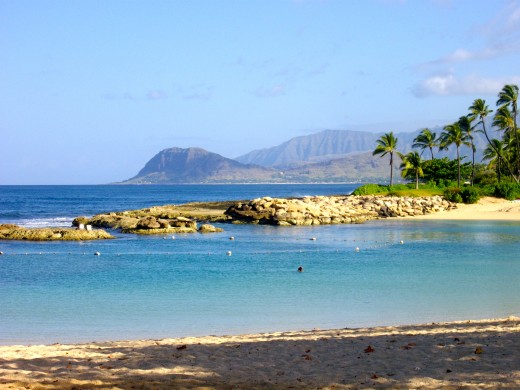
2. The Four Lagoons
The lagoons, a Japanese engineering marvel, are shaped so current flushes in and out making them one of the cleanest ocean aqua-ducts in the world. The filtering outer reef also protects the inner cove, providing some of the safest swimming areas on O'ahu. There are no life guards here, so swimming is at your own risk. The strong flushing current is roped off with bouys, venturing beyond them is foolhardy. Each lagoon is identified by number and Hawaiian marine life name: First or Kohola/Whale Lagoon, Second or Honu/Turtle Lagoon, Third or Naia/Dolphin lagoon and Fourth or Ulua/Jackfish lagoon. These names are fitting as these species are known to frequent these waters, but locals just call them 1,2,3 and 4.
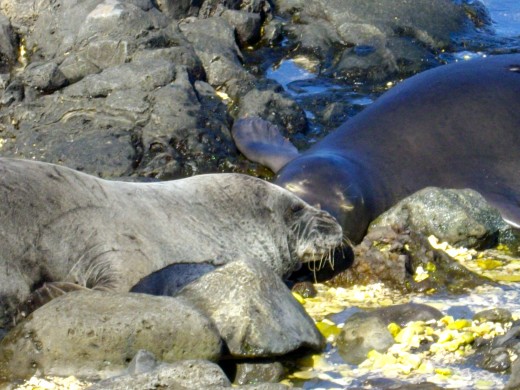
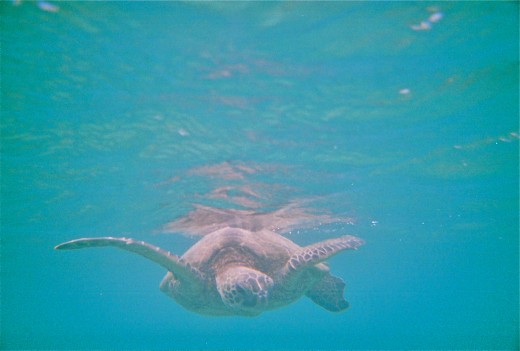
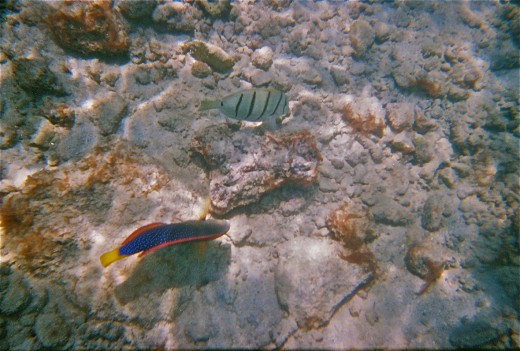
3. Ko ʻOlina's Critters
I have seen Spinner Dolphins on the horizon, Hawaiian Monk Seals basking on the beach, Humpback Whales breaching in distant waves, and Hawaiian Sea Turtles swimming next to me at Ko ʻOlina. Having a large reptile head "pop up" next to you in the ocean may not be "joyful", but it's definitely an adrenaline rush. There are hefty federal fines for deliberately approaching any of these endangered species. Not so endangered or endearing are Mongoose, ferret-like creatures native to India. They were introduced to reduce the rat population. The scheme didn't work as rats come out at night and mongoose are active during daylight.
Snorkeling in the lagoons during prime conditions, provides an "in front of your face" look at many tropical fish. Don't forget your sunscreen as mesmerizing lagoon forays can mean hours spent exploring the reef life.
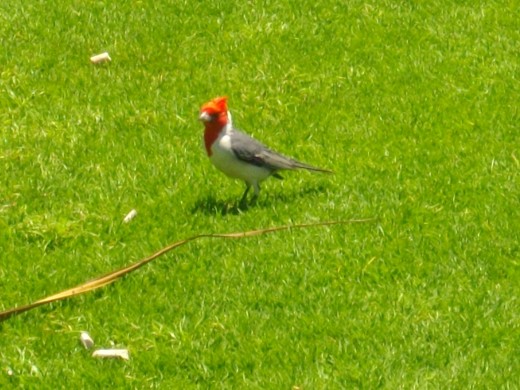
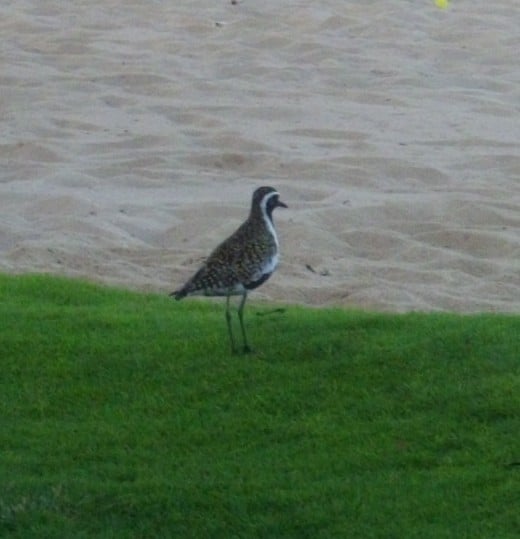
4. Winged Wonders From Around the World
Captivating as well are Ko ʻOlina's avian residents: The colorful and common Red-crested Cardinals are indigenous to South America, along with the less seen Saffron Finch. The Spotted Dove and Zebra Dove of Southeast Asia are abundant. Red vented Bulbuls and Mynas, native to India thrive here. Small Java Sparrows (Indonesia), little Japanese White Eyes (Japan) and tiny Common Waxbills (Africa) are occasionally seen. Up to two foot tall Cattle Egrets, a worldwide species, are sometimes seen at Ko ʻOlina.2
The Golden Plover or Kolea of Alaska and other polar regions spends winter in Hawaiʻi arriving in November and leaving in April every year. They migrate in the same pattern as the Humpback Whale. While in Hawaiʻi, this bird's chest turns black as he dons his "tuxedo" to court romance. Actual breeding takes place in Arctic sites. The whales have their courtship going on in the deep sea . . . it's been happening for eons of winters at Ko ʻOlina.
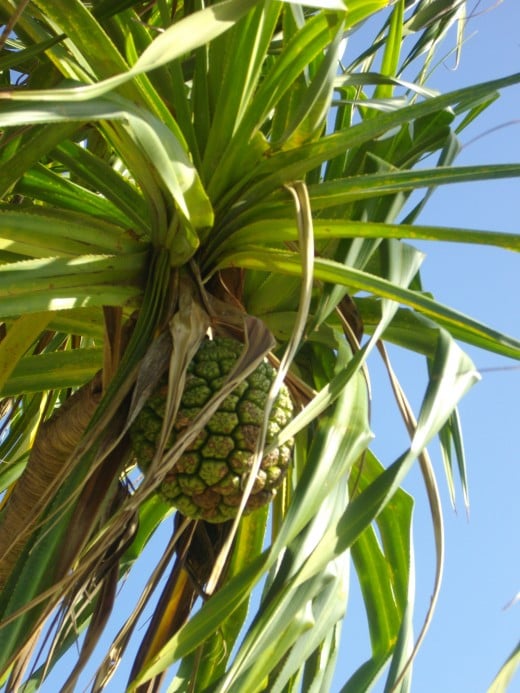
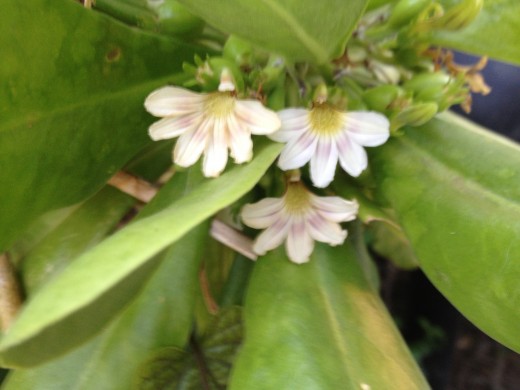
5. Ko ʻOlina Flora
Coconut palms, Milo trees, Hau trees, and Hala trees are a verdant canopy for lagoon goers. These trees were useful to ancient Hawaiians as well and not only for their shade. The palm tree's fruit, bark, leaves and trunk became food, twine, fabric, and drums as needed. The Milo tree, indigenous to Hawaii, has a unique and gorgeous wood used by the ancient Hawaiians. Both the Milo and the Hau tree produce a lovely yellow flower which in a day's time will turn dark red and eventually fall to the ground. Master weavers make use of the Hala Tree's leaves to this day. The leaves are stripped of their prickly ends and woven together in precise light and dark alternating patterns to create artistic treasures that will last for lifetimes. The Honolulu Museum of Arts recently had an exhibit of Hala Hats . . . a great deal of creative planning and work goes into these treasures as the weaver works from the center and moves out to create design masterpieces. Hawaii's shoreline Naupaka Bushes, thrive in the sea air and produce a small white flower, whose legend is told to this day.
6. Fitness and Wellness Opportunities
Aulani, and Marriott Worldwide Vacation Club (MWVC) have weekly scheduled exercise classes. Yoga, water aerobics, fitness walks, Zumba and boot camps are just some of the classes offered. Ko ʻOlina Community Association (KCA) offers classes for local residents as well. Stand up paddle-boarding and snorkeling are popular activities here. Equipment is available for rent at all hotels. Aulani, MVCW, and KCA have modern fitness centers, most with 24 hour access. Not to be forgotten, both MVCW and Aulani have Spas which offer body treatments and massages. The Hawaiian Lomilomi massage is a favorite.
7. Ocean Activities
Ko ʻOlina's Marina supplies captains with boats eager to explore Leeward waters with their patrons. Dolphin cruises and whale watching tours are popular. These mariners know where to go to see fishes and turtles too. At the First Lagoon are catamaran and canoe rides, stand up paddle-boards and a floating trampoline.
8. Aloha Spirit and Resort Security
Once you experience aloha you will understand its friendly and spiritual quality. Aloha can mean hello, goodbye, joy, affection and other things. Breaking down the word we have alo which means "sharing" and "in the present", oha which means "joyous affection" and ha which means "life energy and life breath". This can be literally translated as "joyfully sharing life's energy and breath now."3
The "Aloha Team" that secures the resort, deserves their name. Aulani and MVW security guards also show aloha spirit. These largely unnoticed patrollers have a 24 hour watch against outsiders, and they do it with smiling faces. Guests are likely unaware of the 24 hour guard duty at the resort's entrance because of the friendly reception. Joyfully enjoying life means protecting your precious ones. I find Ko ʻOlina to be one of Oʻahu's safest places.
9. Public Acess with Aloha Spirit
Aloha spirit is suggested in Hawaii's legislature. Public access to beaches is strongly encouraged and the law is worded to suggest permit approvals depend on them. Ko ʻOlina provides public parking at each of the lagoons, with a large parking lot at the Fourth/Ulua Lagoon. The Fourth Lagoon is Ko ʻOlina's Community Beach Park. On the weekends the parking lot fills up fast. Community activities such as yoga classes, triathalon workshops and the annual Taste of Kapolei are held here.
10. Ko Olina's Na Kapuna and More Aoha Spirit
Just as aloha means so much more than hello, Kapuna means "elder' but also "sage", "story teller" and "compassionate guide." The Hawaiians have great respect for their kapunas. If you go strolling at Ko ʻOlina you will likely be walking with Ko ʻOlina's Na Kapuna. These folks have been meeting here most mornings since the resort opened. They have potluck parties to celebrate birthdays, visiting company, retiring hotel managers and other events. For such special events they often wear matching T shirts of all colors that proudly read "Ko ʻOlina Na Kapuna."
There are many more reasons to love Ko ʻOlina: West of First/Kohola Lagoon are three natural lagoons, Lanikohonua Hawaiian Cultural Park, and Paradise Cove Luau. Visit Ko ʻOlina and you will no doubt come up with a few of your own.
References
1.Honoluluadvertiser.com http://the.honoluluadvertiser.com/article/2001/Jul/05/ln/ln06a.html
2. Common Birds of Hawaii. Bess Press, Inc. 2004
3. The Deeper Meaning of Aloha by Curby Rule. http://www.huna.org/html/deeper.html
